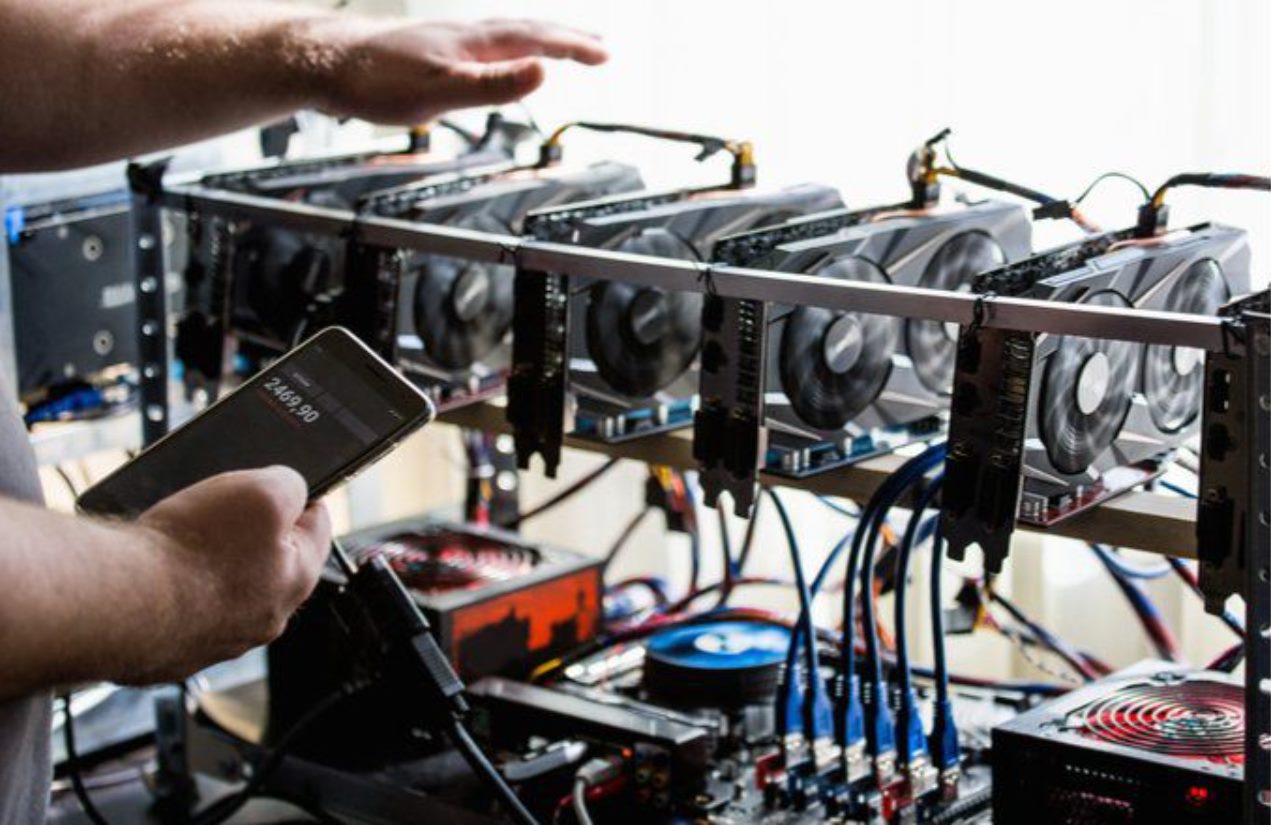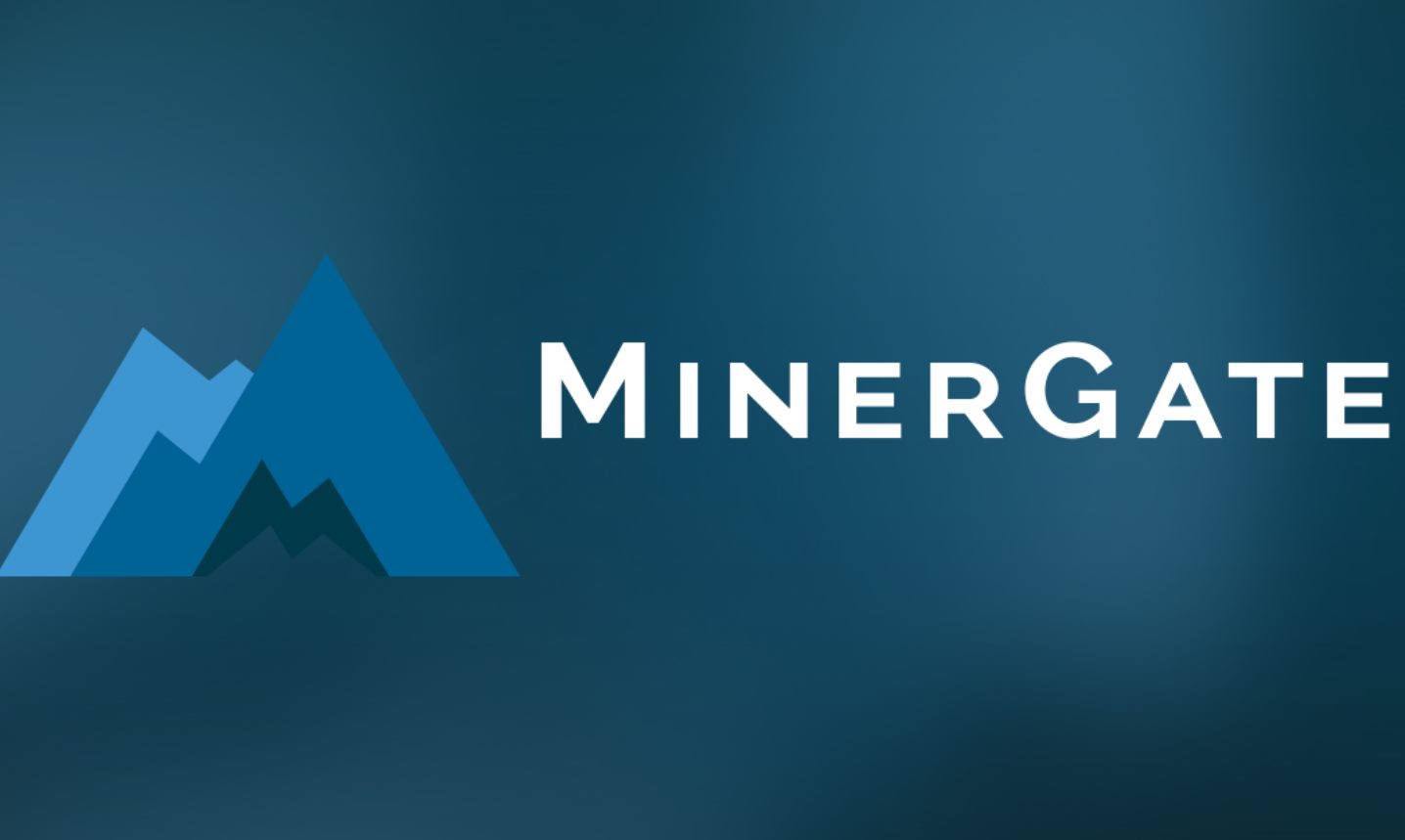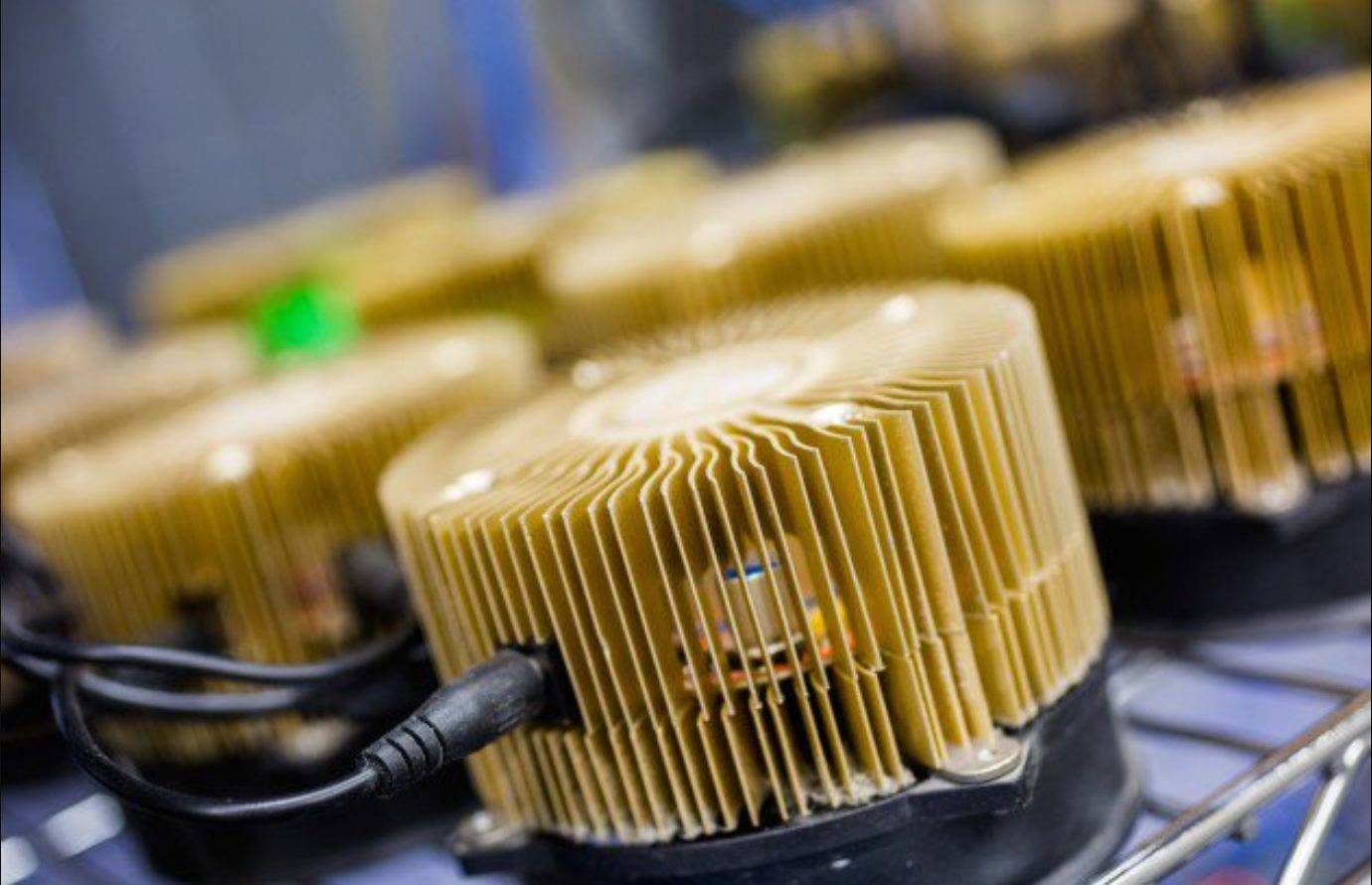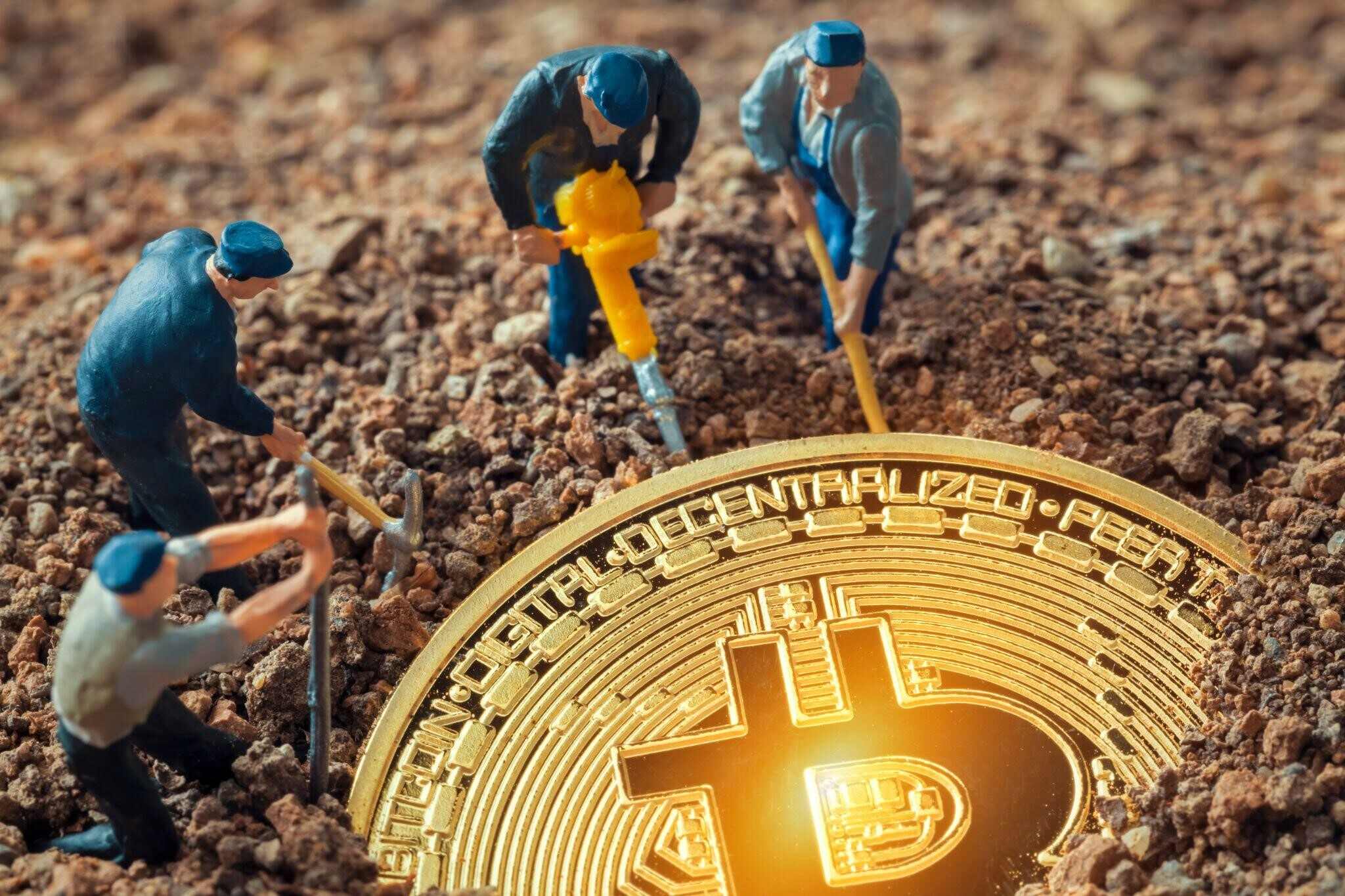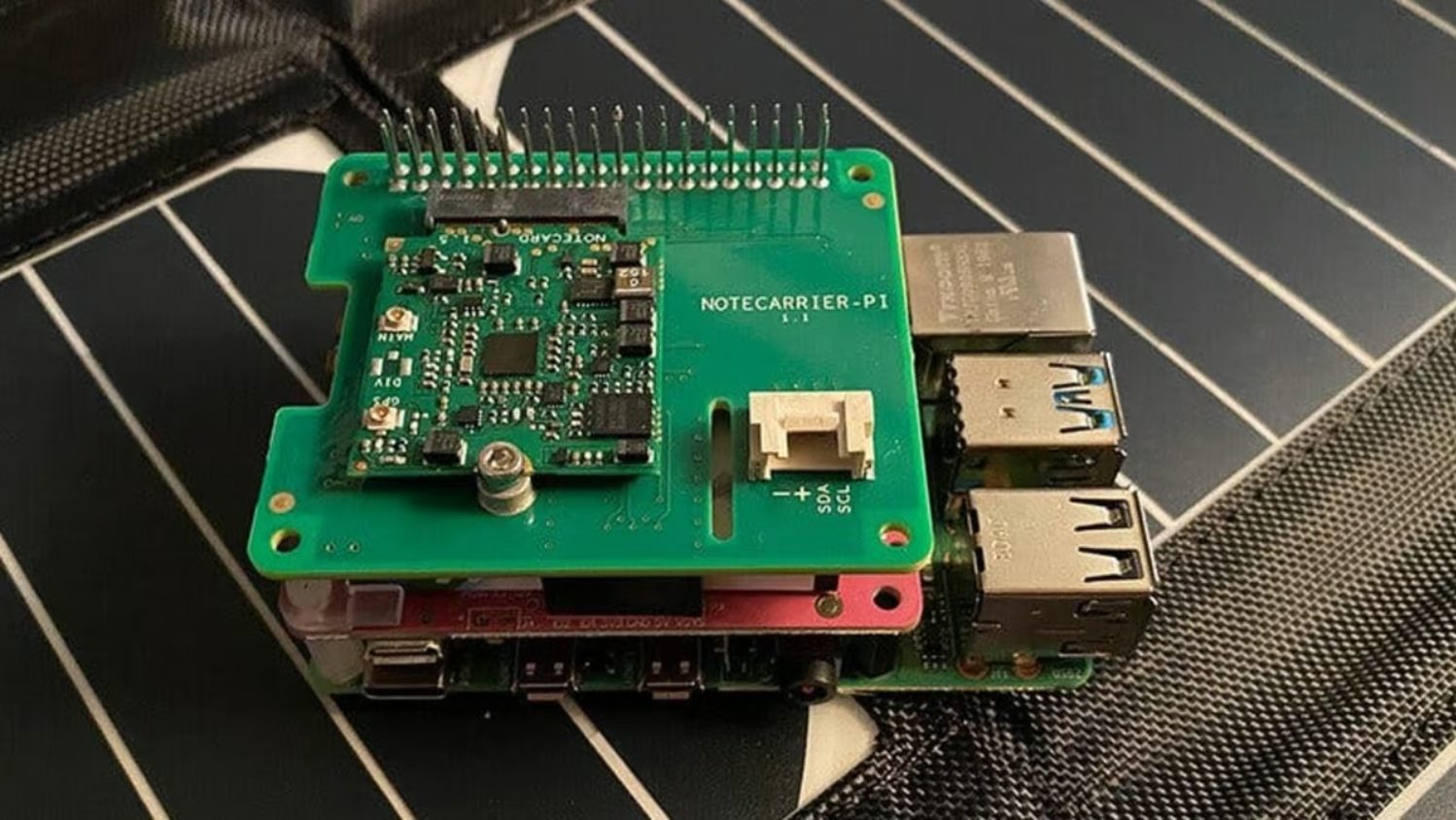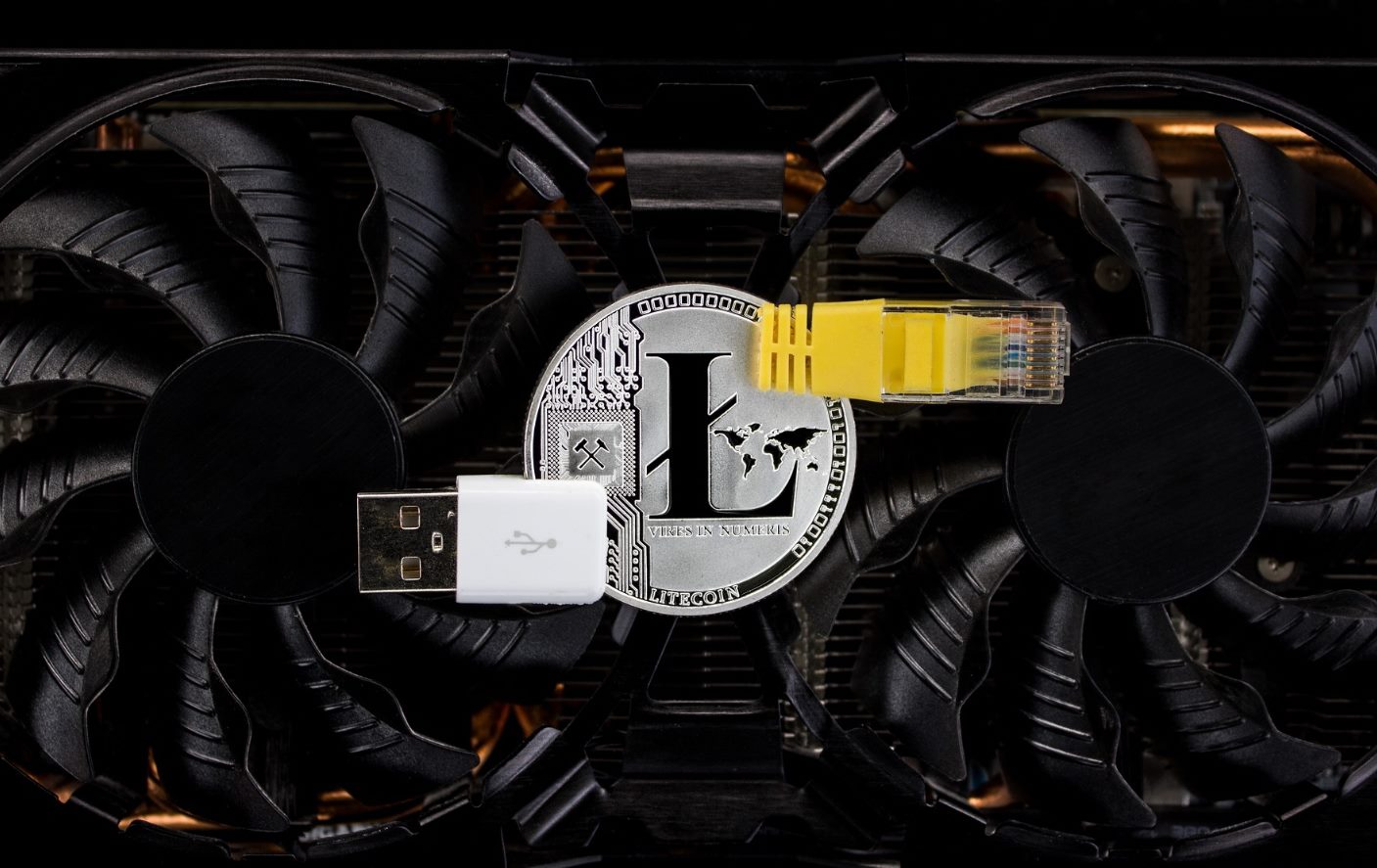Introduction
Welcome to the world of cryptocurrency mining! If you’ve heard about cryptocurrencies like Bitcoin, you may already be familiar with the concept of mining. In this article, we’ll be focusing on Litecoin, a popular cryptocurrency that can be mined using specialized software called a miner.
Litecoin was created in 2011 by Charlie Lee, a former Google engineer, with the aim of providing a faster and more efficient alternative to Bitcoin. While Bitcoin uses SHA-256 algorithm for mining, Litecoin uses a different algorithm called Scrypt. This makes it more accessible to individual miners as it can be successfully mined using consumer-grade hardware.
Before we dive into the process of mining Litecoin, let’s take a moment to understand what exactly a miner is. In the context of cryptocurrency, a miner refers to both the software and hardware components used for validating and verifying transactions on the network.
The mining process involves solving complex mathematical problems that secure the network and add new blocks to the blockchain. Miners are rewarded with newly minted Litecoin for their contributions to maintaining the network’s security and integrity.
Now that we have a basic understanding of Litecoin and miners, let’s delve into the step-by-step process of mining Litecoin. Whether you’re a cryptocurrency enthusiast looking to get started with mining or simply curious about the process, this guide will help you navigate the exciting world of Litecoin mining.
What is Litecoin?
Litecoin is a decentralized peer-to-peer cryptocurrency that was created as an alternative to Bitcoin. It was designed to overcome some of the limitations of Bitcoin, such as scalability and transaction speed, making it a more efficient and accessible digital currency.
Created by Charlie Lee, a former Google engineer, Litecoin was launched in 2011. It is often referred to as the “silver” to Bitcoin’s “gold” and has gained a significant following and market presence since its inception.
One of the key differences between Litecoin and Bitcoin is the algorithm used for mining. While Bitcoin uses the SHA-256 algorithm, Litecoin uses Scrypt. This algorithm is more memory-intensive, which makes it resistant to ASIC (Application-Specific Integrated Circuit) mining, allowing regular consumer-grade hardware to mine Litecoin effectively.
Litecoin also boasts faster block generation times compared to Bitcoin. While Bitcoin produces a new block approximately every 10 minutes, Litecoin generates a new block every 2.5 minutes. This results in faster confirmations and allows for a higher volume of transactions to be processed on the Litecoin network.
Another notable feature of Litecoin is its maximum supply limit. Bitcoin has a cap of 21 million coins, while Litecoin has a maximum supply of 84 million coins. This larger supply means that there will be more Litecoins in circulation, allowing for wider adoption and use.
Litecoin has gained popularity among cryptocurrency users for its fast transaction speed and low fees. It is often used as a means of transferring value between exchanges or wallets due to its efficiency and reliability.
In recent years, Litecoin has also implemented several additional features to enhance its functionality. These include the implementation of Segregated Witness (SegWit), which allows for more transactions to be included in each block, and the potential for the implementation of the Lightning Network, enabling instant and low-cost transactions.
Overall, Litecoin is a cryptocurrency that offers a range of benefits compared to Bitcoin and other digital currencies. Its faster block generation time, lower transaction fees, and ability to be mined using consumer-grade hardware make it an attractive option for both miners and users alike.
What is a Miner?
In the world of cryptocurrency, a miner refers to both the software and hardware components used for validating and verifying transactions on a blockchain network. Miners play a crucial role in maintaining the security and integrity of the network by solving complex mathematical problems.
When a transaction is initiated on a blockchain, it is added to a pool of unconfirmed transactions. Miners then compete to solve a mathematical puzzle that involves finding a hash value that satisfies certain criteria. The first miner to solve the puzzle and validate the transaction is rewarded with newly minted cryptocurrency as well as any transaction fees associated with the block.
Miners utilize specialized hardware, known as mining rigs, to perform the necessary computational operations. These rigs are built using powerful processors, graphics cards, or ASIC (Application-Specific Integrated Circuit) chips, depending on the specific cryptocurrency being mined.
Miners also require mining software, which is responsible for coordinating the mining operations and connecting to the blockchain network. The software interfaces with the mining hardware and provides a user-friendly interface to configure settings and monitor mining progress.
While the primary goal of mining is to validate transactions, it also serves another important purpose: securing the network. Through the process of mining, new blocks are added to the blockchain, which acts as a ledger of all transactions. Each block contains a unique cryptographic hash that is linked to the previous block, creating an immutable record of transactions.
In addition to validating transactions and securing the network, miners also play a role in decentralization. The more miners participating in the network, the more distributed the computational power becomes, making the network more robust and resistant to attacks.
It’s worth noting that as cryptocurrencies have gained popularity, mining has become increasingly competitive. Miners must constantly upgrade their hardware and optimize their mining processes to remain profitable. Additionally, the energy consumption associated with mining has also become a topic of concern, leading to the exploration of more energy-efficient mining methods.
Overall, miners are an essential component of the cryptocurrency ecosystem. They perform the critical task of validating transactions, securing the network, and ensuring the smooth operation of blockchain-based systems.
Step 1: Getting Started
If you’re ready to embark on your Litecoin mining journey, the first step is to ensure you have the necessary equipment and resources. Here’s what you’ll need to get started:
- Hardware: As Litecoin mining involves solving complex mathematical problems, you’ll need a powerful mining rig. Ideally, you’ll want a computer with a high-performance graphics card (GPU) or an ASIC miner specifically designed for Litecoin mining.
- Internet Connection: A stable and reliable internet connection is essential for mining Litecoin. This will enable your mining rig to communicate with the Litecoin network and validate transactions.
- Electricity: Mining cryptocurrencies require a significant amount of electricity. Make sure you have access to a reliable power source and consider the potential impact on your energy costs.
- Litecoin Wallet: You’ll need a wallet to store your mined Litecoins. There are various types of wallets available, including desktop wallets, online wallets, and hardware wallets. Choose a wallet option that suits your preferences in terms of security and convenience.
- Mining Software: Next, you’ll need to choose a mining software compatible with Litecoin. There are several options available, such as CGMiner, EasyMiner, and MultiMiner. These software programs will interface with your mining hardware and allow you to configure your mining settings.
Once you have assembled the necessary hardware and have a Litecoin wallet ready, you’re all set to move on to the next step: downloading and installing the mining software.
Remember, Litecoin mining can be resource-intensive, so make sure you have the appropriate cooling system in place to prevent your mining rig from overheating. Additionally, keep in mind that mining cryptocurrencies can generate noise, so consider setting up your mining rig in a well-ventilated area away from living spaces.
In the next step, we’ll guide you through the process of downloading and installing the mining software.
Step 2: Downloading and Installing Miner
Once you have your mining rig set up and ready to go, the next step is to download and install the mining software. The mining software acts as the interface between your hardware and the Litecoin network, allowing you to start mining for Litecoins. Here’s how you can get started:
- Research and Choose a Mining Software: There are several mining software options available for mining Litecoin. CGMiner, EasyMiner, and MultiMiner are popular choices among miners. Do some research and choose a software that is compatible with your operating system and meets your mining requirements.
- Download the Mining Software: Visit the official website of your chosen mining software and navigate to the downloads section. Ensure that you download the version that is compatible with your operating system.
- Install the Mining Software: Once the download is complete, locate the downloaded file and run the installation wizard. Follow the on-screen instructions to complete the installation process. Make sure you read and understand any additional software requirements or recommendations provided by the mining software developer.
- Configure the Mining Software: After the installation is complete, open the mining software. You will need to configure the software to connect with the Litecoin network and input your mining pool details. Refer to the documentation or help section of the mining software for guidance on how to configure the settings.
- Test the Mining Software: Before you start mining, it’s a good idea to test the software to ensure that everything is functioning correctly. Some mining software programs offer a built-in test feature that allows you to simulate mining without actually using your hardware’s resources. Use this feature to make sure your software is set up properly.
Once you have completed these steps, you are ready to move on to the next step: setting up your Litecoin wallet. Installing the mining software is a crucial part of the mining process as it enables your hardware to communicate with the Litecoin network and participate in the mining process. Take your time to familiarize yourself with the mining software’s features and settings to optimize your mining experience.
In the next step, we will guide you through the process of setting up your Litecoin wallet.
Step 3: Setting Up Your Litecoin Wallet
Before you can start mining Litecoin, you’ll need a secure wallet to store your mined coins. A Litecoin wallet is a software application that allows you to send, receive, and store your Litecoins. Here’s how you can set up your Litecoin wallet:
- Choose a Wallet: There are several types of Litecoin wallets available, each with its own advantages and security features. You can choose from desktop wallets, online wallets, mobile wallets, or hardware wallets. Consider factors such as convenience, security, and ease of use when selecting a wallet.
- Download and Install the Wallet Software: Visit the official website of your chosen wallet provider and download the wallet software for your operating system. Follow the installation instructions provided by the wallet provider to install the wallet software on your device.
- Create a New Wallet: Once the wallet software is installed, open the application and choose the option to create a new wallet. You will typically be prompted to set a strong password for your wallet. Remember to choose a password that is unique and difficult to guess, as it will be crucial for protecting your Litecoins.
- Backup Your Wallet: It is essential to back up your wallet to protect your Litecoins from potential loss or theft. Most wallet software will provide you with a recovery phrase or a backup file that you should store securely. Follow the instructions provided by the wallet software to ensure you have a proper backup that can be used for wallet recovery.
- Receive Litecoins: Your wallet will generate a unique receiving address for you. This address is like a bank account number that you can share with others to receive Litecoins. To receive Litecoins, provide your receiving address to the person or mining pool from where you are expecting the Litecoins to be sent.
- Test Transactions: To ensure that your wallet is functioning correctly, you can send a small amount of Litecoins to your wallet from another source. This will help you verify the receiving process and ensure that your wallet is properly set up.
Setting up your Litecoin wallet is an important step as it provides a secure and convenient way to manage your mined Litecoins. Remember to keep your wallet software up to date and take necessary precautions to secure your wallet and backup information.
In the next step, we’ll guide you through the process of joining a mining pool, an option that can greatly increase your mining efficiency and chances of earning Litecoins.
Step 4: Joining a Mining Pool
Joining a mining pool is a popular option for miners looking to increase their chances of earning Litecoins consistently. A mining pool is a group of miners who combine their computing power to collectively mine cryptocurrencies. By joining a mining pool, you can share resources, increase your mining efficiency, and receive a more predictable and consistent payout. Here’s how you can join a mining pool:
- Research and Choose a Mining Pool: There are several mining pools available for Litecoin mining. Research and choose a mining pool that offers a good balance between reliability, fees, and reward distribution. Consider factors such as pool size, reputation, and the pool’s payout scheme.
- Create an Account: Visit the website of your chosen mining pool and create an account. You may be required to provide a username, password, and email address for registration.
- Configure Your Mining Software: Open your mining software and navigate to the settings or configuration section. Enter the details provided by the mining pool, including the pool’s URL and your account credentials. This will ensure that your mining rewards are correctly attributed to your account.
- Choose Your Mining Strategy: Some mining pools offer different mining strategy options, such as Pay-per-Share (PPS), Proportional, or Pay-per-Last-N-Shares (PPLNS). Each strategy has its own benefits, so choose the one that aligns with your mining goals and preferences.
- Start Mining in the Pool: Save your configuration settings and start your mining software. It will now connect to the selected mining pool and start mining Litecoins as part of the pool’s collective mining effort.
- Monitor Your Mining Progress: It’s important to monitor your mining progress within the pool. Most mining pools provide a dashboard or web interface where you can track your mining statistics, such as hash rate, shares submitted, and your expected payout.
Joining a mining pool can greatly increase your chances of earning Litecoins regularly. However, keep in mind that most mining pools charge a small fee for their services, typically deducted from your mining rewards. Consider the fees and payout schemes when choosing a mining pool.
In the next step, we will guide you through the process of configuring your mining software to optimize your mining settings for Litecoin.
Step 5: Configuring Miner
Configuring your mining software is a crucial step to optimize your mining efficiency and ensure that your mining operations are running smoothly. Here’s how you can configure your miner for Litecoin mining:
- Open Your Mining Software: Start by launching your mining software. The software interface will provide you with various settings and options to customize your mining experience.
- Choose the Mining Algorithm: Make sure that your mining software is configured to use the Scrypt algorithm, which is the algorithm used for mining Litecoin. This ensures that your mining software is targeting the correct cryptographic calculations specific to Litecoin mining.
- Input Mining Pool Details: Enter the details of the mining pool you joined in the previous step. This includes the pool’s URL, username, and password, which were provided to you during the mining pool registration process. By entering these details, your mining software will connect to the mining pool and start mining Litecoins as part of the pool’s collective effort.
- Set Your Intensity Level: The intensity level determines the amount of computing power your miner will dedicate to mining Litecoins. Higher intensity levels require more computational resources but can result in higher mining speeds. Experiment with different intensity levels to find the optimal balance for your mining rig.
- Configure GPU Settings (if applicable): If you are using a GPU miner, you may have additional settings and configurations specific to your graphics card. Consult the documentation or user guide for your mining software to understand these settings and ensure that your GPU is running at optimal performance.
- Monitor Hardware Temperature: Keep an eye on your mining rig’s temperature to prevent overheating. Mining can put a significant load on your hardware, especially when mining for extended periods. Use monitoring tools provided by your mining software or third-party applications to ensure that your hardware remains at a safe temperature.
- Saving and Applying the Configuration: Once you have configured the necessary settings, save your configuration changes. Your mining software may require you to restart the application for the changes to take effect.
By customizing and fine-tuning your miner’s configuration settings, you can optimize your mining performance and improve your chances of earning Litecoins. It’s important to note that each mining software may have its own configuration options, so it’s recommendable to consult the documentation or user guide specific to the software you’re using.
In the next step, we’ll guide you through the process of starting the mining process and monitoring your mining progress.
Step 6: Starting the Mining Process
Once you have configured your mining software, you are ready to start the mining process and begin earning Litecoins. Here’s how you can get started:
- Double-Check Your Configuration: Before starting the mining process, double-check your mining software settings to ensure that everything is properly configured. Verify that you have entered the correct mining pool details, intensity level, and any other specific settings related to your mining rig.
- Start Your Mining Software: Launch your mining software and initiate the mining process. Depending on the software, you may have options to start and stop the mining process manually or configure the software to start mining automatically upon startup.
- Monitor the Mining Process: Keep an eye on your mining software to monitor its performance and ensure that it is successfully mining Litecoins. You should see information such as your hash rate, accepted shares, and current mining status. This will give you an indication of your mining progress.
- Stay Patient: Mining Litecoins can take time, especially if you are using consumer-grade hardware. The mining process involves solving complex mathematical problems, and the results are not immediate. Be patient, and allow your mining software to run for a significant period to accumulate more mining shares and increase your chances of earning Litecoins.
- Consider Power Consumption: Keep in mind that mining Litecoins requires a significant amount of computational power, resulting in increased power consumption. Monitor your electricity usage and factor in the associated costs to ensure that mining remains profitable for you.
- Periodically Check Your Mining Progress: Regularly check your mining software or mining pool dashboard to track your mining progress. You should see your shares submitted, estimated time to find a block, and any rewards or payouts that you have accumulated. This will give you an idea of how efficiently your mining operations are performing.
Remember, mining Litecoins can be a time-consuming process, and the profitability will depend on various factors such as hardware, electricity costs, and the current state of the cryptocurrency market. It’s important to manage your expectations and understand that mining returns may fluctuate over time.
In the next step, we’ll guide you through the process of monitoring your mining progress and ensuring that your mining operations are running smoothly.
Step 7: Monitoring Your Mining Progress
Monitoring your mining progress is crucial to ensure that your mining operations are running smoothly and efficiently. Here’s how you can effectively monitor your mining progress for Litecoin:
- Monitor Mining Software: Keep an eye on your mining software to monitor its performance. Check the software’s interface or dashboard regularly for information such as hash rate, shares submitted, and current mining status. This will give you insights into the efficiency of your mining operations.
- Track Mining Pool Dashboard: If you are mining in a pool, most mining pools provide a user-friendly dashboard where you can monitor your mining progress. Log in to your mining pool account and check for details such as mining shares, earnings, and real-time mining statistics. This will give you a comprehensive overview of your contributions to the pool and the rewards you have earned.
- Watch for Accepted Shares: Accepted shares indicate that your mining hardware successfully solved a portion of a mining algorithm. If your mining software shows a high number of accepted shares, it indicates that your mining rig is performing well. If you notice a low number of accepted shares or a high number of rejected shares, you may need to adjust your mining software or hardware settings.
- Monitor Hardware Temperature: As you mine Litecoins, your hardware will generate heat. Make sure to monitor your mining rig’s temperature to prevent overheating. Excessive heat can damage your hardware and negatively impact mining performance. Consider using temperature monitoring tools or configuring your mining software to alert you if the temperature rises too high.
- Stay Informed About Market Conditions: Keep yourself updated on the cryptocurrency market conditions, including Litecoin’s price and mining difficulty. Market fluctuations can impact mining profitability. Understanding these factors can help you make informed decisions regarding your mining operations and when to adjust your strategy if needed.
- Regularly Check Network Statistics: Stay informed about the overall Litecoin network statistics, such as total network hash rate and block generation time. This information can provide insights into the network’s health and the level of mining competition. It can also help you gauge the efficiency of your mining operations compared to the overall network hash rate.
By actively monitoring your mining progress, you can identify and address any issues that may arise, optimize your mining operations, and ensure that you are maximizing your mining efficiency and potential earnings.
In the next step, we’ll guide you through the process of withdrawing the Litecoins you have successfully mined.
Step 8: Withdrawing Your Mined Litecoins
Congratulations on successfully mining Litecoins! After accumulating a certain amount of Litecoins, you may want to withdraw them and transfer them to your personal wallet or exchange account. Here’s how you can withdraw your mined Litecoins:
- Access Your Mining Pool Account: Log in to your mining pool account and navigate to the withdrawal section. This is where you can initiate the process of transferring your mined Litecoins to your designated wallet address.
- Set Withdrawal Threshold: Some mining pools have a minimum withdrawal threshold, meaning you need to accumulate a certain number of Litecoins before you can make a withdrawal. Check your mining pool’s withdrawal policy to see if there is a minimum threshold that you need to meet.
- Enter Wallet Address: Provide your Litecoin wallet address in the withdrawal section of your mining pool account. Make sure to double-check the accuracy of the address to avoid any errors or lost funds.
- Confirm and Submit Withdrawal Request: Once you have entered your wallet address, review the withdrawal details and confirm the transaction. Follow any additional verification steps required by the mining pool to complete the withdrawal process.
- Track the Withdrawal Process: After submitting the withdrawal request, you can track the progress of the transaction. Some mining pools provide a withdrawal history or transaction status page where you can monitor the transfer of your Litecoins.
- Check Your Wallet Balance: Once the withdrawal is processed and confirmed, check your Litecoin wallet to ensure that the Litecoins have been successfully transferred. Depending on network congestion and verification processes, it may take some time for the Litecoins to appear in your wallet.
- Keep Records: It’s essential to maintain proper records of your withdrawal transactions. Note down the date, amount, and transaction ID associated with each withdrawal for future reference. This documentation will help you keep track of your mining earnings and facilitate any necessary tax reporting.
Remember to keep your Litecoin wallet secure and backed up. It’s good practice to regularly back up your wallet’s private keys or mnemonic phrase to ensure that you have a reliable backup in case of any unexpected issues.
Withdrawing your mined Litecoins allows you to enjoy the fruits of your mining efforts. Whether you intend to hold onto the Litecoins or exchange them for other cryptocurrencies or fiat currency, the choice is yours.
Congratulations once again on completing all the steps to mine and withdraw your Litecoins!
Conclusion
Congratulations on completing the step-by-step process of mining Litecoins! By following these steps, you have gained a deeper understanding of what Litecoin is, how to set up your mining equipment, configure your mining software, join a mining pool, and monitor your mining progress. You have also learned how to withdraw your hard-earned Litecoins to your personal wallet.
Mining Litecoins can be a rewarding and exciting venture, allowing you to contribute to the security and decentralization of the Litecoin network. However, it’s important to keep in mind that mining can be resource-intensive and electricity-consuming. Before starting your mining operations, it’s crucial to consider factors such as hardware costs, electricity expenses, and the overall profitability of mining in your region.
Remember to regularly monitor the market conditions and adjust your mining strategy as needed. It’s also essential to stay informed about any updates or innovations in the field of cryptocurrency mining, as this can impact the efficiency and profitability of your mining efforts.
As you continue your journey in the world of cryptocurrency mining, keep exploring and discovering new ways to optimize your mining operations. Stay up-to-date with advancements in mining hardware, software, and mining pool options to ensure that you are maximizing your potential earnings.
Lastly, always prioritize the security of your Litecoins. Keep your mining software and wallet software up to date, use strong passwords, and store backup information securely. Being proactive in safeguarding your assets will protect you from potential security risks or loss of Litecoins.
Now that you have the knowledge and skills to mine Litecoins, it’s time to take action and embark on your mining journey. Enjoy the process, stay informed, and make the most out of your mining endeavors!







